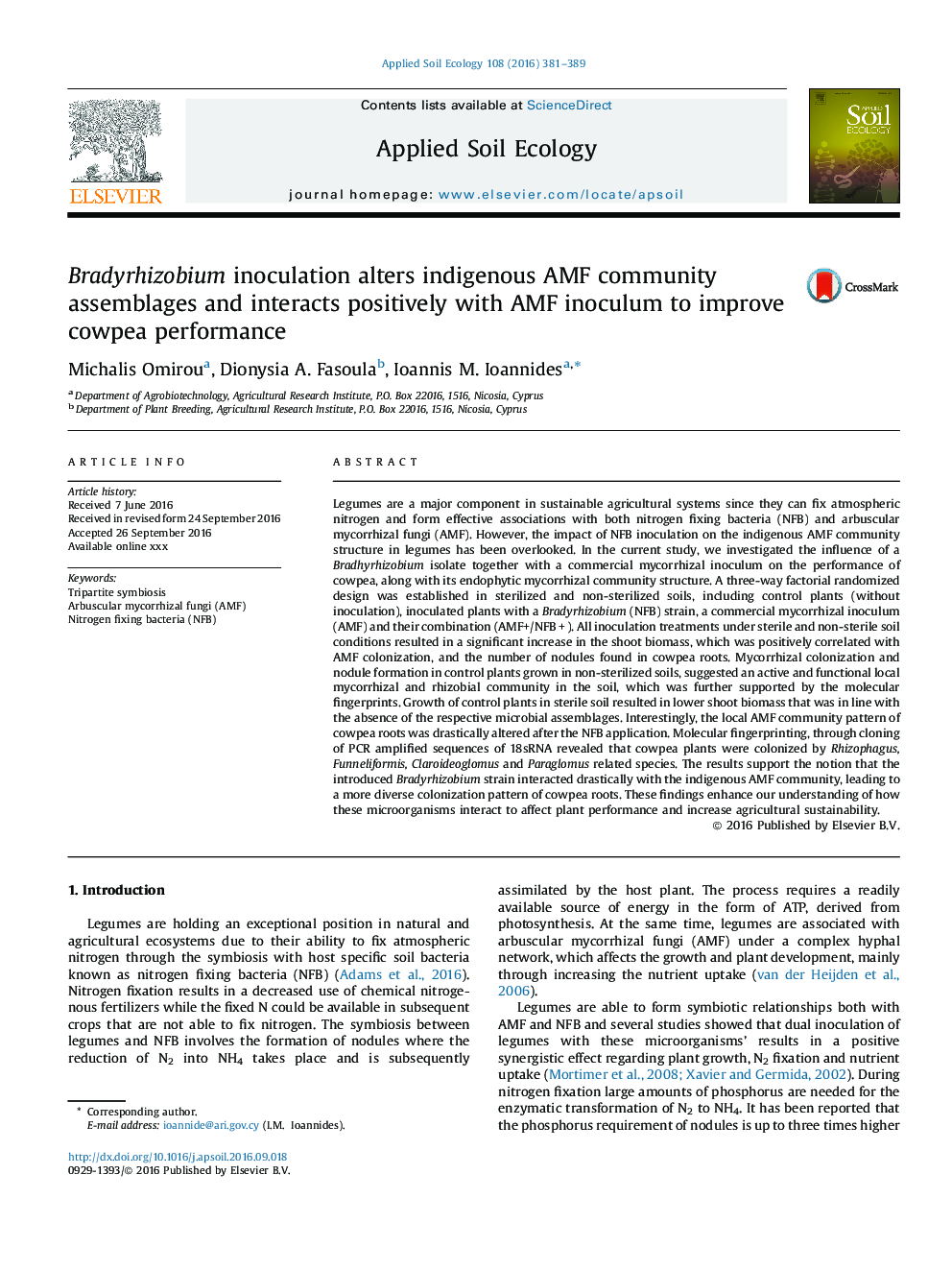| کد مقاله | کد نشریه | سال انتشار | مقاله انگلیسی | نسخه تمام متن |
|---|---|---|---|---|
| 6297509 | 1617775 | 2016 | 9 صفحه PDF | دانلود رایگان |
عنوان انگلیسی مقاله ISI
Bradyrhizobium inoculation alters indigenous AMF community assemblages and interacts positively with AMF inoculum to improve cowpea performance
دانلود مقاله + سفارش ترجمه
دانلود مقاله ISI انگلیسی
رایگان برای ایرانیان
کلمات کلیدی
موضوعات مرتبط
علوم زیستی و بیوفناوری
علوم کشاورزی و بیولوژیک
بوم شناسی، تکامل، رفتار و سامانه شناسی
پیش نمایش صفحه اول مقاله

چکیده انگلیسی
Legumes are a major component in sustainable agricultural systems since they can fix atmospheric nitrogen and form effective associations with both nitrogen fixing bacteria (NFB) and arbuscular mycorrhizal fungi (AMF). However, the impact of NFB inoculation on the indigenous AMF community structure in legumes has been overlooked. In the current study, we investigated the influence of a Bradhyrhizobium isolate together with a commercial mycorrhizal inoculum on the performance of cowpea, along with its endophytic mycorrhizal community structure. A three-way factorial randomized design was established in sterilized and non-sterilized soils, including control plants (without inoculation), inoculated plants with a Bradyrhizobium (NFB) strain, a commercial mycorrhizal inoculum (AMF) and their combination (AMF+/NFBÂ +Â ). All inoculation treatments under sterile and non-sterile soil conditions resulted in a significant increase in the shoot biomass, which was positively correlated with AMF colonization, and the number of nodules found in cowpea roots. Mycorrhizal colonization and nodule formation in control plants grown in non-sterilized soils, suggested an active and functional local mycorrhizal and rhizobial community in the soil, which was further supported by the molecular fingerprints. Growth of control plants in sterile soil resulted in lower shoot biomass that was in line with the absence of the respective microbial assemblages. Interestingly, the local AMF community pattern of cowpea roots was drastically altered after the NFB application. Molecular fingerprinting, through cloning of PCR amplified sequences of 18sRNA revealed that cowpea plants were colonized by Rhizophagus, Funneliformis, Claroideoglomus and Paraglomus related species. The results support the notion that the introduced Bradyrhizobium strain interacted drastically with the indigenous AMF community, leading to a more diverse colonization pattern of cowpea roots. These findings enhance our understanding of how these microorganisms interact to affect plant performance and increase agricultural sustainability.
ناشر
Database: Elsevier - ScienceDirect (ساینس دایرکت)
Journal: Applied Soil Ecology - Volume 108, December 2016, Pages 381-389
Journal: Applied Soil Ecology - Volume 108, December 2016, Pages 381-389
نویسندگان
Michalis Omirou, Dionysia A. Fasoula, Ioannis M. Ioannides,